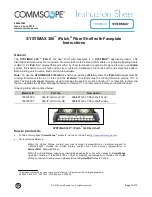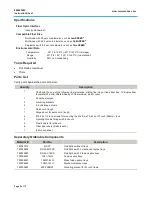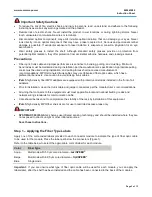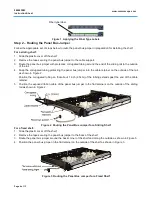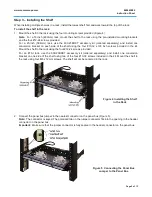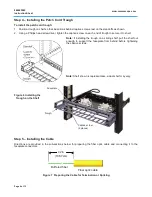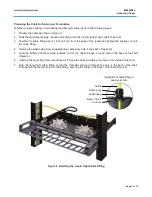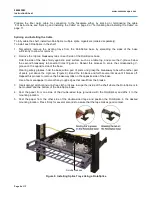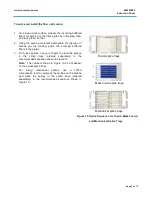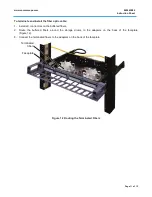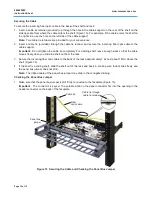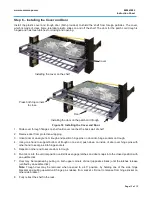
860463082
Instruction Sheet
www.commscope.com
Page 12 of 13
Securing the Cable
To secure the incoming fiber optic cable to the back of the shelf and rack:
1. Insert a cable tie retainer (provided) up through the hole in the cable support on the rear of the shelf on the
side opposite from where the cable enters the shelf (Figure 13). For example, if the cable enters the shelf on
the right side, use the hole on the left side of the cable support.
Note:
Two cable tie retainers are provided for your convenience.
2. Insert a cable tie (provided) through the cable tie retainer and secure the incoming fiber optic cable to the
cable support.
Important
: Do not tighten the cable tie completely. For a sliding shelf, leave enough slack so that the cable
moves freely when you slide the shelf out from the rack.
3. Secure the incoming fiber optic cable to the back of the rack approximately 7 inches (about 18cm) above the
shelf (Figure 13).
4. If the shelf is a sliding shelf, slide the shelf out of the rack and back in, making sure that it slides freely and
the panel bus jumper does not bind.
Note
: The ribbon cable of the panel bus jumper may slide in the corrugated tubing.
Checking the Panel Bus Jumper
1. Make sure that the panel bus jumper is still firmly connected to the faceplate (Figure 13).
Important
: The connector is keyed. The polarized tab on the panel connector fits into the opening in the
header connector on the back of the faceplate.
Figure 13 Securing the Cable and Checking the Panel Bus Jumper
Panel bus
jumper
Cable tie through
cable tie retainer
Cable tie
Fiber
optic cable

